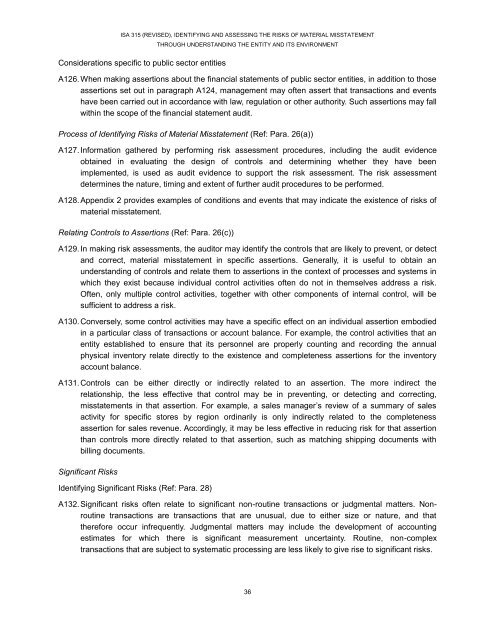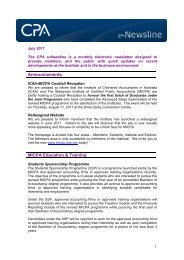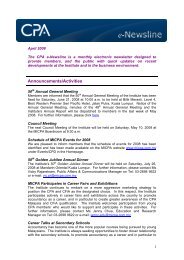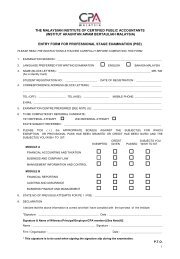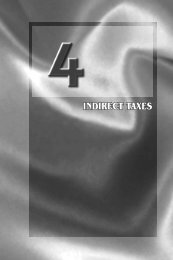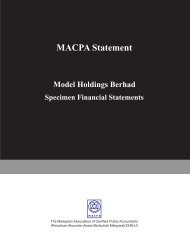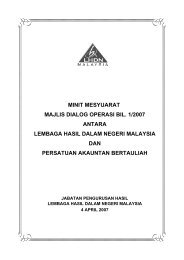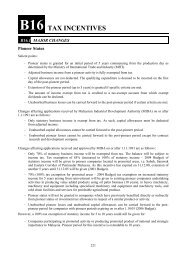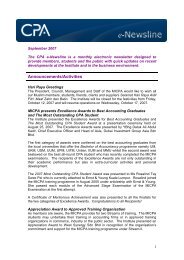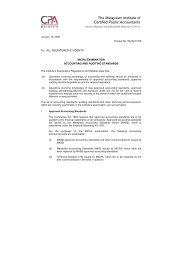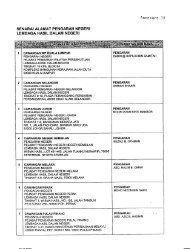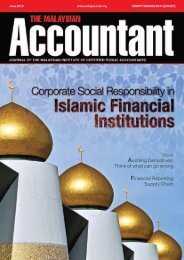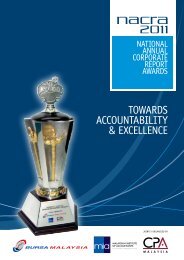Identifying and Assessing the Risks of Material Misstatement ...
Identifying and Assessing the Risks of Material Misstatement ...
Identifying and Assessing the Risks of Material Misstatement ...
You also want an ePaper? Increase the reach of your titles
YUMPU automatically turns print PDFs into web optimized ePapers that Google loves.
ISA 315 (REVISED), IDENTIFYING AND ASSESSING THE RISKS OF MATERIAL MISSTATEMENTConsiderations specific to public sector entitiesTHROUGH UNDERSTANDING THE ENTITY AND ITS ENVIRONMENTA126. When making assertions about <strong>the</strong> financial statements <strong>of</strong> public sector entities, in addition to thoseassertions set out in paragraph A124, management may <strong>of</strong>ten assert that transactions <strong>and</strong> eventshave been carried out in accordance with law, regulation or o<strong>the</strong>r authority. Such assertions may fallwithin <strong>the</strong> scope <strong>of</strong> <strong>the</strong> financial statement audit.Process <strong>of</strong> <strong>Identifying</strong> <strong>Risks</strong> <strong>of</strong> <strong>Material</strong> <strong>Misstatement</strong> (Ref: Para. 26(a))A127. Information ga<strong>the</strong>red by performing risk assessment procedures, including <strong>the</strong> audit evidenceobtained in evaluating <strong>the</strong> design <strong>of</strong> controls <strong>and</strong> determining whe<strong>the</strong>r <strong>the</strong>y have beenimplemented, is used as audit evidence to support <strong>the</strong> risk assessment. The risk assessmentdetermines <strong>the</strong> nature, timing <strong>and</strong> extent <strong>of</strong> fur<strong>the</strong>r audit procedures to be performed.A128. Appendix 2 provides examples <strong>of</strong> conditions <strong>and</strong> events that may indicate <strong>the</strong> existence <strong>of</strong> risks <strong>of</strong>material misstatement.Relating Controls to Assertions (Ref: Para. 26(c))A129. In making risk assessments, <strong>the</strong> auditor may identify <strong>the</strong> controls that are likely to prevent, or detect<strong>and</strong> correct, material misstatement in specific assertions. Generally, it is useful to obtain anunderst<strong>and</strong>ing <strong>of</strong> controls <strong>and</strong> relate <strong>the</strong>m to assertions in <strong>the</strong> context <strong>of</strong> processes <strong>and</strong> systems inwhich <strong>the</strong>y exist because individual control activities <strong>of</strong>ten do not in <strong>the</strong>mselves address a risk.Often, only multiple control activities, toge<strong>the</strong>r with o<strong>the</strong>r components <strong>of</strong> internal control, will besufficient to address a risk.A130. Conversely, some control activities may have a specific effect on an individual assertion embodiedin a particular class <strong>of</strong> transactions or account balance. For example, <strong>the</strong> control activities that anentity established to ensure that its personnel are properly counting <strong>and</strong> recording <strong>the</strong> annualphysical inventory relate directly to <strong>the</strong> existence <strong>and</strong> completeness assertions for <strong>the</strong> inventoryaccount balance.A131. Controls can be ei<strong>the</strong>r directly or indirectly related to an assertion. The more indirect <strong>the</strong>relationship, <strong>the</strong> less effective that control may be in preventing, or detecting <strong>and</strong> correcting,misstatements in that assertion. For example, a sales manager’s review <strong>of</strong> a summary <strong>of</strong> salesactivity for specific stores by region ordinarily is only indirectly related to <strong>the</strong> completenessassertion for sales revenue. Accordingly, it may be less effective in reducing risk for that assertionthan controls more directly related to that assertion, such as matching shipping documents withbilling documents.Significant <strong>Risks</strong><strong>Identifying</strong> Significant <strong>Risks</strong> (Ref: Para. 28)A132. Significant risks <strong>of</strong>ten relate to significant non-routine transactions or judgmental matters. Nonroutinetransactions are transactions that are unusual, due to ei<strong>the</strong>r size or nature, <strong>and</strong> that<strong>the</strong>refore occur infrequently. Judgmental matters may include <strong>the</strong> development <strong>of</strong> accountingestimates for which <strong>the</strong>re is significant measurement uncertainty. Routine, non-complextransactions that are subject to systematic processing are less likely to give rise to significant risks.36


